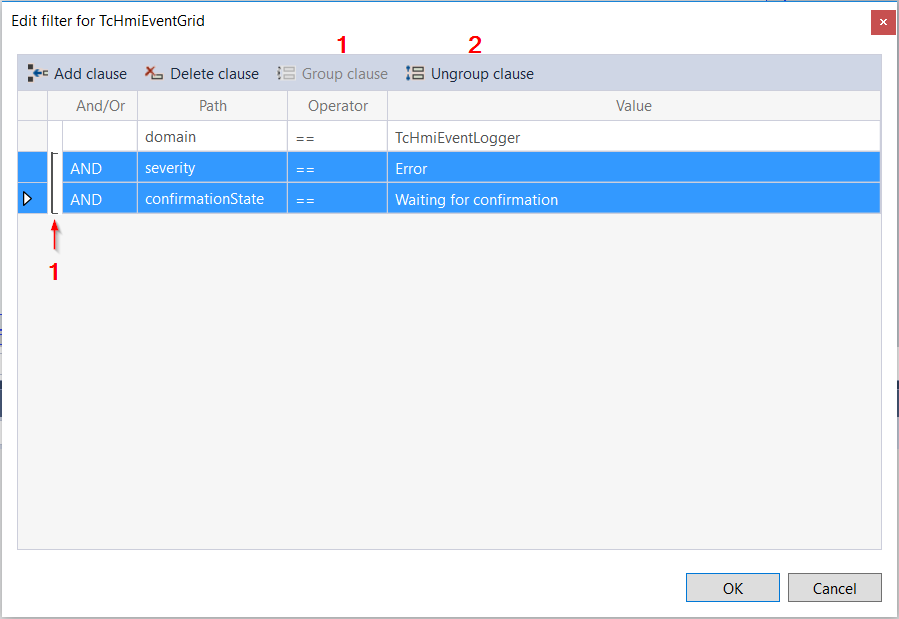Filter
You can configure which events are to be displayed via the filter editor. The filters are defined via the properties of the Event Grid.
Structure of the Filter Editor

- Add clause: add a clause
- Delete clause: delete a clause
- And/Or: logical combination of clauses
- Path: filter options:
- domain: server extension which delivered the alarm (e.g. TcHmiEventLogger).
- sourceDomain: server extension that triggered the alarm. The sourceDomain may differ from the domain if a server extension forwards the alarms (e.g. TcHmiSqliteLogger).
- name: name of the event.
- text: text of the event.
- Id: ID of the event.
- timeRaised: time at which the event was triggered.
- timeCleared: time at which an alarm was reset.
- timeConfirmed: time at which the alarm was confirmed.
- type: type of event (alarm or message).
- severity: severity of the event (prohibitions, info, warning, error, critical error).
- alarmState: state of an alarm (triggered, confirmed, deleted, confirmed and deleted).
- confirmationState: state of acknowledgement of an alarm (not required, not supported, waiting for acknowledgement, acknowledged, reset).
- „params::“: the parameter object of an event can be accessed in the text field of the path via the keyword "params::" (without quotation marks). The parameter object contains optional parameters that can differ depending on the event source. For example, the TwinCAT Eventlogger provides additional information about the event origin in the PLC. The parameters are accessed in camelCase, e.g.: params::sourceName
- Operator: comparison operator of the clause
- Value: value of the clause
Grouping of conditions
Several conditions can be grouped and linked if more than one condition is selected. The conditions are selected by clicking the rows with the CTRL key pressed.

- Group clause: grouping of several clauses. The brackets link them optically.
- Ungroup clause: ungrouping.